16 Inventors Who Were Killed By Their Own Inventions
1. The co-founder of the Stanley Motor Carriage Company crashed his automobile into a woodpile.

2. The first hot air balloonist died while crossing the English Channel.
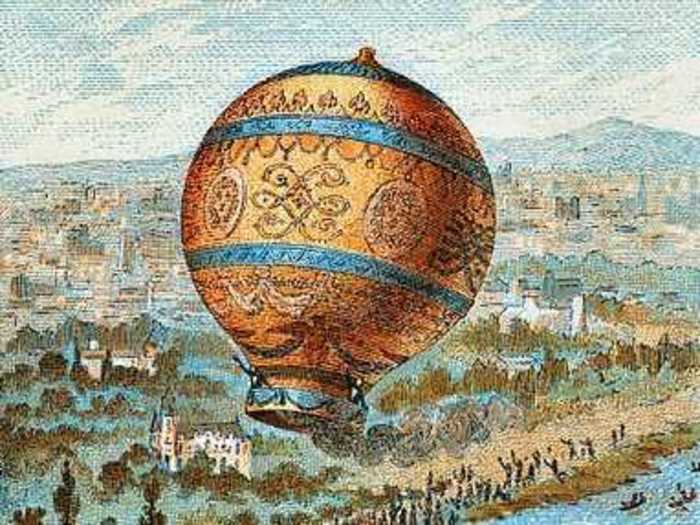
The "extremely theatrical" Jean-Françoise Pilâtre de Rozier volunteered for the first human hot air balloon flight in 1783 (along with Marquis d'Arlandes) because "there was no way" he "was going to let this honor go to an artisan." The flight propelled him into international stardom.
Two other men later gained notoriety for being the first to cross the English Channel by hot air balloon. Their flight was not without significant problems — and they nearly drowned.
Pilâtre de Rozier was envious of their stardom (and that he was no longer the center of attention) and created the Rozière balloon to solve the problems faced by the other men. Unfortunately, something mysterious went wrong during his own attempt at crossing the English Channel, and he died during the flight.
Source: Ultimate History
3. Scientists working in a secret New Mexico laboratory called "Omega Site" received lethal doses of radiation from the core of a plutonium bomb.
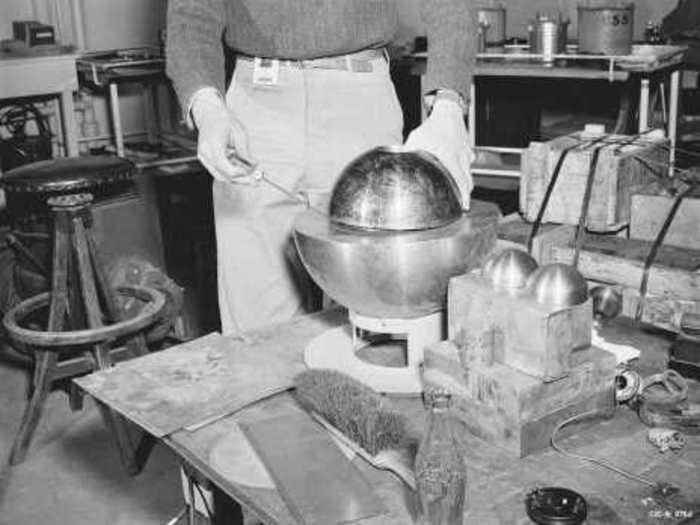
In 1946, eight scientists including Louis Slotin (who previously worked on the Manhattan project) and S. Allen Kline were working on an "action that would bring into close proximity the two halves of a beryllium-coated sphere and convert the plutonium to a critical state."
Slotin and the team had performed this experiment over 24 times by that point, but this specific time a screwdriver that was keeping the two halves from touching slipped — which caused a lethal burst of radiation. Slotin died in nine days.
Source: New York Times
4. Bullock's printing press crushed his foot. He then developed gangrene and died during his amputation surgery.
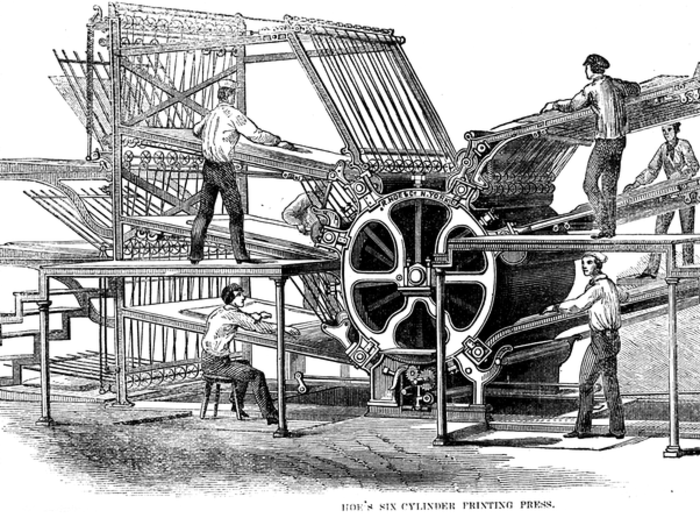
William Bullock invented a better version of the rotary printing press in 1863, which was the first "modern" newspaper printing press.
In 1867 his leg got caught and crushed in the gears of the printing press — which led to gangrene developing in that leg. He died during the amputation operation.
Source: History Wired, Rootsweb/Ancestry
5. The man credited with popularizing jogging died while on a morning jog.

James "Jim" Fixx started the jogging trend after publishing several fitness books including "The Complete Book of Running".
He died after a "massive" heart attack during a jog.
Fixx actually took up jogging because he worried about his hereditary predisposition to heart disease: his father started having heart troubles at age 35, and later died of a heart attack at age 43.
Source: New York Times
6. A Bolshevik co-founder hoped to achieve eternal youth via blood transfusions — but ended up dying from one.
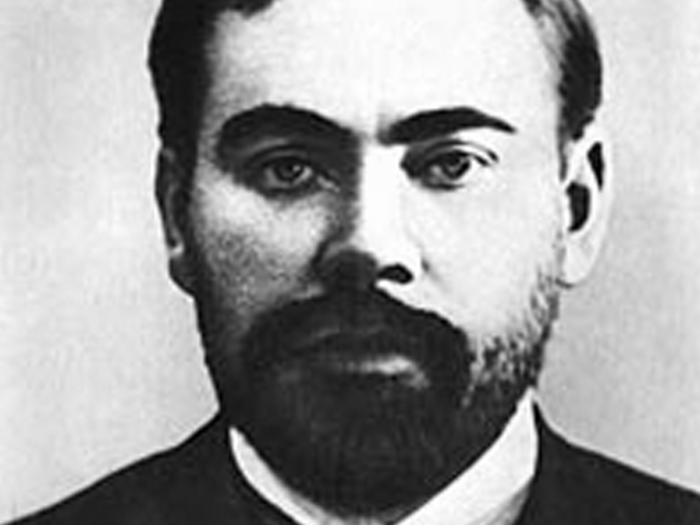
Alexander Bogdanov originally co-founded the Bolshevik Party with Vladmir Lenin, but was kicked out of the group by 1909 (before the revolution).
He shifted gears to science, medicine, and psychiatry, and even inventing his own discipline, "tektology" — an attempt unify all the sciences.
In the 1920s, Bogdanov began experimenting with blood transfusions in order to "achieve eternal youth or at least partial rejuvenation." He even convinced Stalin to create the Institute of Blood Transfusion.
Following 11 blood transfusions, Bogdanov claimed that his eyesight improved, and that his balding was "suspended". He died when he took the blood of a student who had malaria and tuberculosis.
The student made a complete recovery.
Source: Genius Stuff
7. Titanic's chief naval architect was aboard the ship for its maiden voyage — and was heralded as a hero.
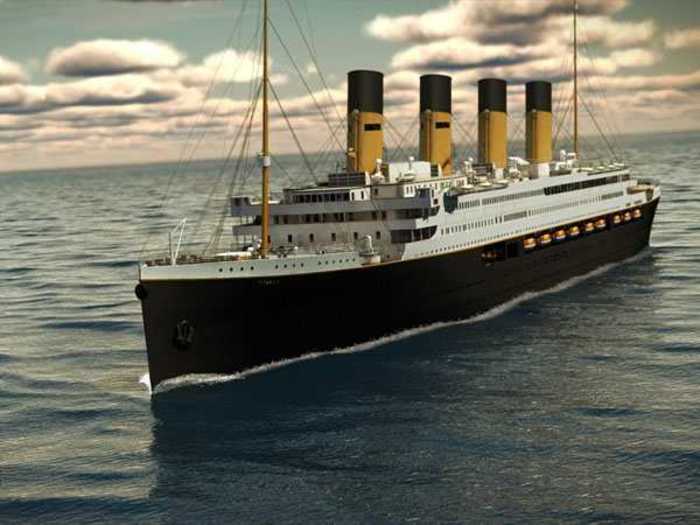
Thomas Andrews designed the ship, and suggested that the Titanic have "at least 46 life boats." Ultimately only 20 were added, despite his advice.
He spent his last hours helping people find life jackets and get into lifeboats. After helping everyone he could, Andrews was last seen in the first class smoking room, staring at a painting — "Approach to the New World." His body was never recovered.
He is remembered as a hero.
Source: Encyclopedia Titanica
8. The inventors of the flying Ford Pinto died when the car's detachable wings detached mid-flight.

Henry Smolinski and Hal Blake invented the AVE Mizar, a flying car with detachable wings.
They envisioned a flying car that would act like a mini helicopter, and would travel short distances of several hundred miles between local airports. After the flight, the driver could just take take the wings off and drive away from the airport.
Unfortunately, the detachable wings detached mid-flight during a test run. There were no attempts at a second model.
Source: io9
9. The "Glider King" lost control of his hang glider and fractured his spine after a 50 foot nosedive.
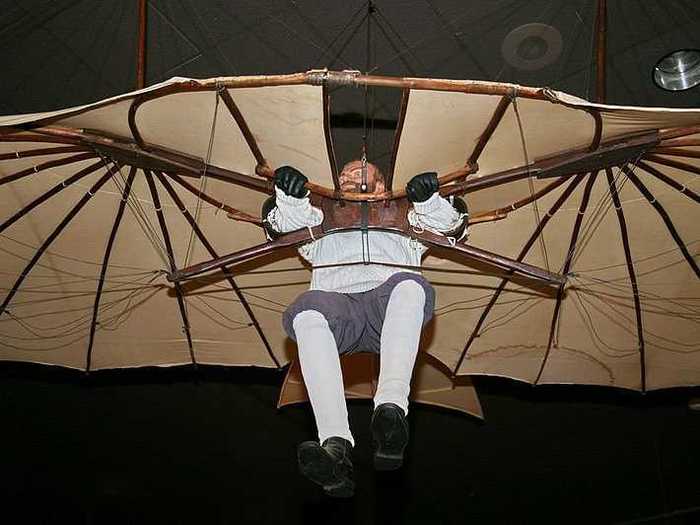
The man who inspired the Wright Brother — Lilienthal — was the first person to take safe and replicable gliding flights. Before Lilienthal's successes, flying was considered to be an impossibility reserved "for dreamers and fools."
All together, Lilienthal constructed eighteen types of gliders: fifteen monoplanes and three biplanes, and took over 2,000 glider flights.
During his last flight he lost control, and went into a nosedive — which fractured his spine. While he was lying in the hospital, his last words were "Opfer müssen gebracht werden!", meaning "Sacrifices must be made!"
Sources: Century of Flight
10. The Chancellor under the Qin Dynasty devised the Five Pains execution method — and was later was executed by the same method.

Li Si, the Chancellor under the Qin Dynasty during the 3rd century BCE devised the "Five Pains" (alternatively referred to as the "Five Punishments") torture method — the victim's forehead was branded; then his nose was cut off; then his foot was cut off; then he was castrated; and then he was executed.
After the death of Emperor Qin Shi Huang, Li Si and the eunuch Zhao Gao decided to override the emperor's wishes and installed their own chosen prince as the successor. And then, Zhao Gao had Li Si executed in the Five Pains method.
Source: History of China, Humanities 360
11. An Austrian inventor was testing a rocket when it accidentally exploded and killed him.
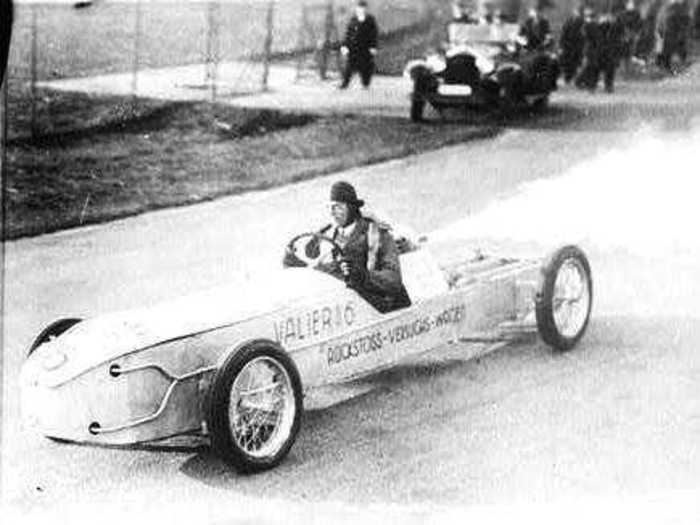
Max Valier was interested in moving forward rocketry, and hoped to advance towards spaceflight. In 1927, he created the Spaceflight Society, and in 1928 created rocket cars that accelerated up to 145 mph. And if that wasn't enough, in 1929 he created a rocket powered sled that hit 250 mph.
After his vehicular successes, he started to experiment with liquid propellant rockets, hoping to soon experiment with rocket-powered aircrafts. A rocket accidentally exploded, killing Valier in 1930.
Source: New Mexico Space Museum
12. The author of a 10th century Arab dictionary leapt from the roof of a mosque, and attempted to fly with two wooden wings.

Abu Nasr Isma'il ibn Hammad al-Jawhari was a 10th-11th century lexicographer and theologian who is best remembered as the author of an Arab dictionary.
He also leapt off the roof of the Nisabur Mosque, and attempted to fly with two wooden wings.
13. Marie Curie won two Nobel Prizes for physics and chemistry, but later died from exposure to radiation.
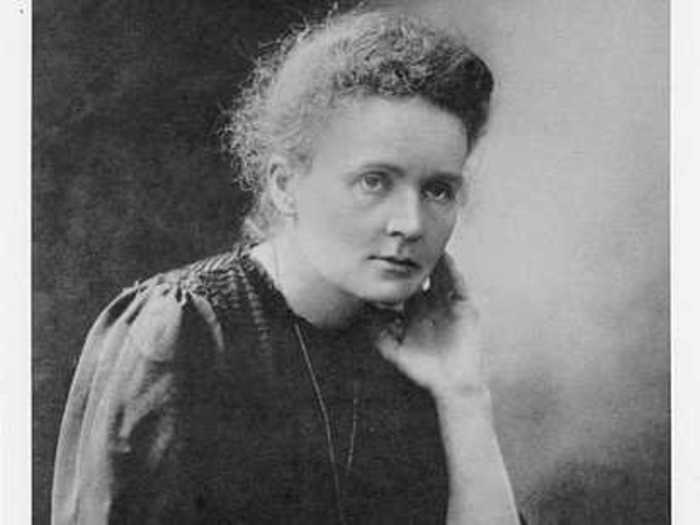
Marie Curie is credited with the discovery of radium and polonium, and for numerous advances in radioactivity (a word she invented). Her work led to the development of X-Rays
For her work, she was awarded the Nobel Prizes in Physics and Chemistry. That made her the first woman to win the Nobel Prize and the only woman to have been awarded the Nobel Prize twice. To this day, she is the only PERSON to win a Nobel Prize in two different sciences.
Unfortunately, she was exposed to a lot of radiation because of her research, and died of leukemia in 1934.
Source: BBC and Nobel Prize.org
14. A daredevil stuntman died after he rolled off the Houston Astrodome in his shock absorbent barrel.

Karel Soucek is probably best known as the eighth person to go over the Niagara Falls in 1984... in a homemade barrel.
In 1985, Soucek rolled off the Houston Astrodome in another self-designed barrel in front of N audience of 35,000. There was a water tank below the Astrodome that was supposed to soften Soucek's fall — however, the barrel clipped the edge of the tank. His skull was fractured and his chest and abdomen were crushed.
Source: LA Times
15. "The Flying Tailor" jumped off the Eiffel Tower and attempted to fly with his clothes-parachute.
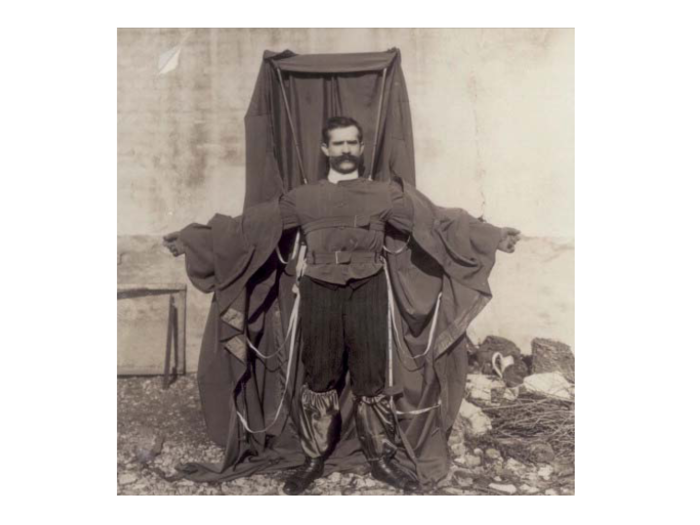
The French tailor-slash-inventor, Franz Reichelt, designed a "vêtement-parachute" (clothes-parachute). To test his invention, he jumped off the Eiffel Tower in 1912. His flight was unsuccessful.
According to a 1912 article from the now-defunct Le Temps, Reichelt was given permission to do this experiment by the Parisian Police, although they were under the impression that he would be using a dummy.
Source: La Presse (February 5, 1912)
16. The Soviet inventor of the a propeller-driven rail car died after the machine derailed during a test run.
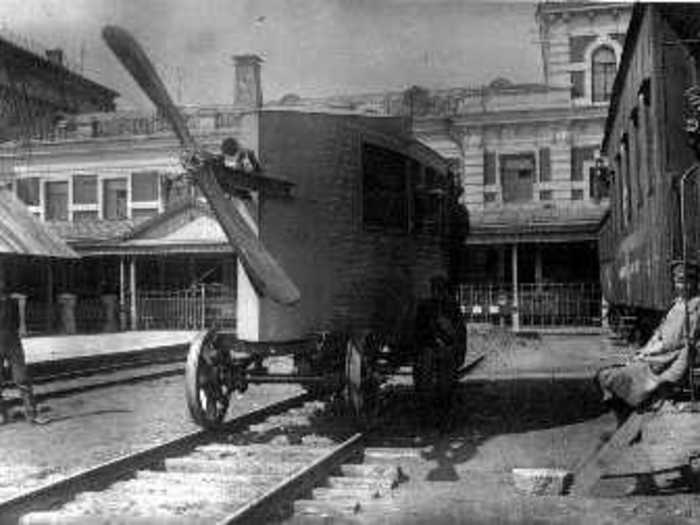
Valerian Abakovsky designed a propeller-driven rail car that was intended to transport officials quickly across the Soviet Union — which was been a great idea because of the country's large land mass.
Unfortunately, during a test run in 1921, the rail car derailed and the project was canceled.
BONUS: Legend has it that a 16th century Chinese local government official tied 47 rockets to a chair and tried to fly to the moon.
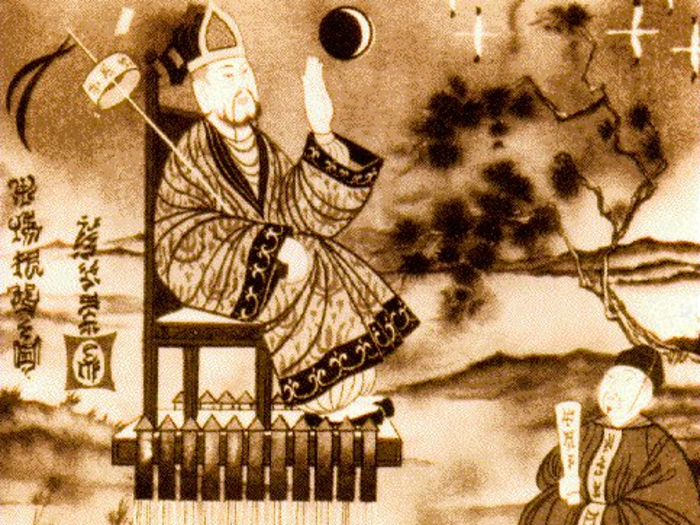
According to a Chinese legend, Wan Hu, a local government official during the Ming Dynasty, aspired to travel to the moon.
Rockets use has been reported all the way to 1232 in China (back to when the Chinese were at war with the Mongols). As a result, it's possible that Wan Hu had access to rockets.
He attached two kites and 47 gunpowder-filled rockets to a chair, and asked 47 servants to light the rockets. According to the legend, there was an "enormous bang" — and Wan and his contraption disappeared.
It's unclear whether the Wan Hu story is true, but a lunar crater was named Wan-Hoo in his honor.
Source: CNN
Popular Right Now
Advertisement
